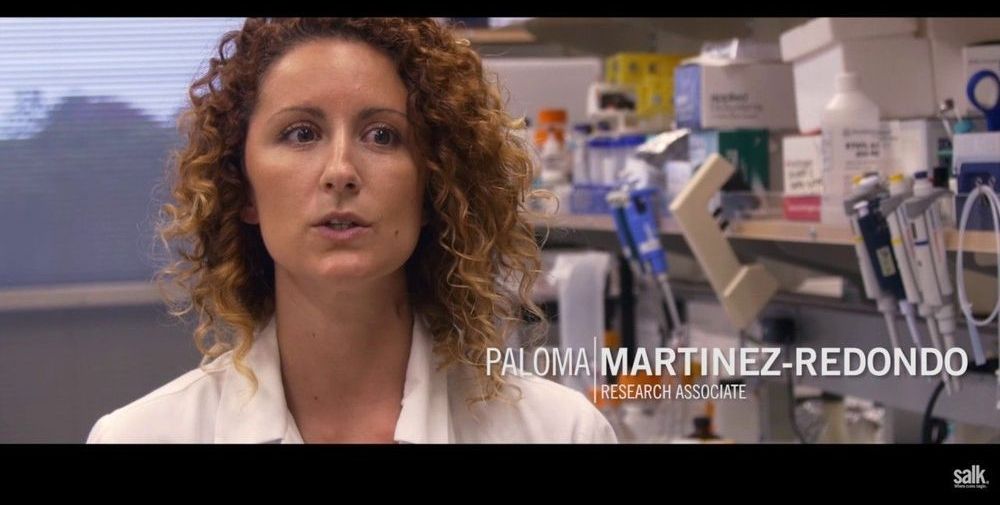Neuroscientists Pinpoint Cells In The Amygdala Where Pain Hurts : Shots — Health News Researchers have pinpointed the neurons that give pain its unpleasant edge. By turning these neurons off in mice, the scientists relieved the unpleasantness of pain without numbing sensation.
Back in the first moment of the universe, everything was hot and dense and in perfect balance. There weren’t any particles as we’d understand them, much less any stars or even the vacuum that permeates space today. The whole of space was filled with homogeneous, formless, compressed stuff.
Then, something slipped. All that monotonous stability became unstable. Matter won out over its weird cousin, antimatter, and came to dominate the whole of space. Clouds of that matter formed and collapsed into stars, which became organized into galaxies. Everything that we know about started to exist.
So, what happened to tip the universe out of its formless state? [How Quantum Entanglement Works (Infographic)].
There’s no shortage of data breaches these days, but this one should make you sit up and pay attention. The newly discovered “Collection #1” is the largest public data breach by volume, with 772,904,991 unique emails and 21,222,975 unique passwords exposed.
The breach was first reported by Troy Hunt, the security researcher who runs the site Have I Been Pwned (HIBP), where you can check if your email has been compromised in a data breach. In his blog, Hunt says a large file of 12,000 separate files and 87GB of data had been uploaded to MEGA, a popular cloud service. The data was then posted to a popular hacking forum and appears to be an amalgamation of over 2,000 databases. The troubling thing is the databases contain “dehashed” passwords, which means the methods used to scramble those passwords into unreadable strings has been cracked, fully exposing the passwords.
Today the collaboration for the LHCb experiment at CERN’s Large Hadron Collider announced the discovery of two new particles in the baryon family. The particles, known as the Xi_b’- and Xi_b*-, were predicted to exist by the quark model but had never been seen before. A related particle, the Xi_b*, was found by the CMS experiment at CERN in 2012. The LHCb collaboration submitted a paper reporting the finding to Physical Review Letters.
Like the well-known protons that the LHC accelerates, the new particles are baryons made from three quarks bound together by the strong force. The types of quarks are different, though: the new X_ib particles both contain one beauty (b), one strange (s), and one down (d) quark. Thanks to the heavyweight b quarks, they are more than six times as massive as the proton. But the particles are more than just the sum of their parts: their mass also depends on how they are configured. Each of the quarks has an attribute called “spin”. In the Xi_b’- state, the spins of the two lighter quarks point in the opposite direction to the b quark, whereas in the Xi_b*- state they are aligned.
“Nature was kind and gave us two particles for the price of one,” said Matthew Charles of the CNRS’s LPNHE laboratory at Paris VI University. “The Xi_b’- is very close in mass to the sum of its decay products: if it had been just a little lighter, we wouldn’t have seen it at all using the decay signature that we were looking for.”
Today, we chronicle the progress of OSKM and discuss how this powerful treatment may be able to reprogram cells back into a youthful state, at least partially reversing the hallmark of epigenetic alterations and other hallmarks as well.
The birth of cellular reprogramming
In 2006, a study by Drs. Takahashi and Yamanaka showed that it was possible to reprogram cells using just four master genes named oct4, sox2, klf4, and c-myc, or OSKM for short [1]. Prior to this, it was assumed that egg cells (oocytes) would contain a complex array of factors needed to reprogram a somatic cell into becoming an embryonic cell. After all, the feat of transforming an aged egg cell and reprogramming it to make a new animal must be controlled by many factors present in the egg cell, or so they thought.
‘’Computational rationality leads to a deeper understanding because it goes beyond descriptions of how we fail. Instead, it shows us how the brain marshals its resources to solve problems. One benefit of this approach is the ability to test theories of what our abilities and constraints are.
Decades of psychological research suggests humans are rather irrational. But a new approach, borrowing an idea from artificial intelligence, challenges this notion.
Electronegativity is one of the most well-known models for explaining why chemical reactions occur. Now, Martin Rahm from Chalmers University of Technology, Sweden, has redefined the concept with a new, more comprehensive scale. His work, undertaken with colleagues including a Nobel Prize-winner, has been published in the Journal of the American Chemical Society.
The theory of electronegativity is used to describe how strongly different atoms attract electrons. By using electronegativity scales, one can predict the approximate charge distribution in different molecules and materials, without needing to resort to complex quantum mechanical calculations or spectroscopic studies. This is vital for understanding all kinds of materials, as well as for designing new ones. Used daily by chemists and materials researchers all over the world, the concept originates from Swedish chemist Jöns Jacob Berzelius’ research in the 19th century and is widely taught at high-school level.
Now, Martin Rahm, Assistant Professor in Physical Chemistry at Chalmers University of Technology, has developed a brand-new scale of electronegativity.









